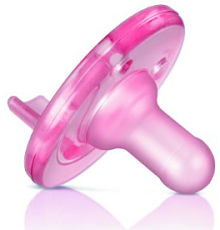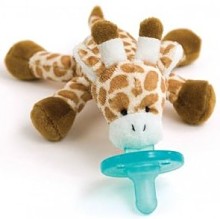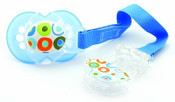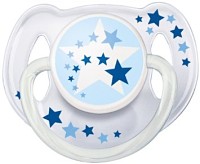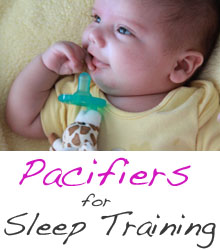 Pacifiers happen to be one of my favorite baby products. It’s amazing how such a small thing has become so critical in our day-to-day routine with the babies. Sure, they’re great for handling fussiness or teething discomfort, but pacifiers truly become invaluable when it comes to sleep training.
Pacifiers happen to be one of my favorite baby products. It’s amazing how such a small thing has become so critical in our day-to-day routine with the babies. Sure, they’re great for handling fussiness or teething discomfort, but pacifiers truly become invaluable when it comes to sleep training.
Whether it’s for soothing the baby to sleep at bedtime, or handling unexpected wake-ups, I can honestly say that pacifiers have enabled longer and more consistent baby sleep for all three of our kids. We probably wouldn’t have survived without them. And when we had to wean our babies from the pacifier, we lost a powerful sleep training tool.
Newborn Pacifiers
Our newborns all seemed to prefer the Soothie pacifier, a strange-looking but highly effective pacifier that they tend to use in most hospitals. The Soothie is designed to mimic the shape and feel of a mother’s nipple, and therefore it presumably doesn’t interfere with your baby learning to nurse. They’re a bit unwieldy, however, and between that and a newborn generally not being very strong yet, this pacifier tends to fall out a lot.
Will it work for sleep training? Sure, but you won’t really be able to do any sleep training in the first couple of months of life. At that stage, newborns eat, sleep, and poop in 2-4 hour cycles. The most important thing you can do with regard to sleep training is get your baby accustomed to falling asleep in the crib on his or her own. Getting into this habit only gets harder as your baby gets older and louder.
Pacifiers at Bedtime
One of the most effective ways to teach babies to sleep through the night is to establish a bedtime routine, and the pacifier is an important part of that. For us it’s always the last step, the final touch of comfort after we tuck them in bed before we leave the room.
There are a few benefits to this:
- It quiets the baby (or babies, in the case of twins) from crying for you as you leave. This reduces your temptation to go back in and soothe the baby another time.
- The comfort of the pacifier acts as a sort of proxy for your presence to calm the baby. There’s that 30-second period when a baby first gets a pacifier and is so happy he or she can’t think of anything else… the perfect time for you to slip out.
- The feel of the pacifier becomes, by habit, something your baby expects and associates with falling asleep. They learn that the pacifier is the last thing they need.
The pacifier is an integral part of our babies’ bedtime routine, and I hope it becomes part of yours, too.
Handling Wake-Ups with Pacifiers
Another part of baby sleep training is how you handle wake-ups. There are a number of reasons that babies wake up at night, but more often than not, it’s hunger. When you feed your baby at this middle-of-the-night waking, it reinforces the habit. Your baby’s little body thinks that it needs to wake up at that time to eat, and so it does.
This is a perfect opportunity to use the pacifier as part of your baby’s sleep training. First, you offer less milk at that late-night feeding, cutting it in half for the first couple of nights, then in half again. Then, you offer only a bit of water for two nights. Then, you offer just the pacifier (sometimes you can dip this in water to make it more appealing).
For this to work, you need to make sure there’s a pacifier available and easy to find. Once our boys were over 6 months old, we began using a pacifier clip at night. We also kept spares on our dresser, just in case the clipped one had been pulled off and thrown.
We also kept spares on our dresser, just in case the clipped one had been pulled off and thrown.
A third option is to keep a spare pacifier in the crib near your baby’s head, especially one with glow-in-the-dark handles like the Avent Nighttime Pacifier. It might seem like going overboard, but every time your baby finds the pacifier on his own and goes back to sleep, this thing pays for itself!
Pacifiers for Baby Sleep
You’ll truly come to appreciate how important pacifiers are for your baby’s sleep patterns when you have to take them away. In my article on weaning baby from the pacifier, I discuss what you’ll have to look forward to when you do this: a baby that has trouble falling asleep, staying asleep, and just staying happy in general. On the bright side, I have some tips in there for how to make the transition go smoother.
